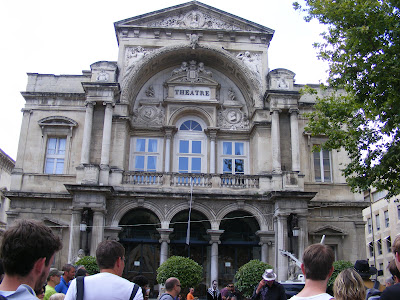This is part of a series The Theory of the Leisure Class, Thorstein Veblen. His third chapter is on Conspicuous Leisure.
In an earlier post I explained Veblen’s belief that the development of a leisure class and of individual ownership of property went hand in hand; also the capture of women from an enemy tribe was the beginnings of acquiring trophies for man’s exploit. Thus, the institution of ownership began with the ownership of persons, primarily of women.
The incentives for acquiring women as property were several: a) a natural propensity for dominance; b) evidence of prowess in war; and c) perhaps most importantly, the personal services they provided. Veblen makes no particular reference to sexual services, he’s just talking about servants generally providing service. Like cattle, slaves are an investment and in spite of moving into the quasi-peaceable stage (still within the barbarian culture) women still serve as a unit of value. Accepted evidence of wealth is the possession of many women and other slaves engaged in attendance on their master’s person and in producing goods for him.
A division of labor develops where personal service and attendance on the master becomes a more prestigious level of service than those who are engaged in industrial occupations and distanced from him. At some point those servants involved in personal service come to be increasingly exempt from productive industry carried out for gain. This exemption generally begins with the wife, or the chief wife.
Once the habit of capturing a wife from an enemy tribe is no longer the done thing, the chief wife is usually ‘of gentle blood’: ‘ennobled by protracted contact with accumulated wealth or unbroken prerogative’. This further promotes her exemption from vulgar employment. The wife, chosen to gain alliance with her powerful relatives, is her husband’s property as she was her father’s. Although her gentle birth removes her from the ‘debasing employments of her fellow-servants’, she is still inferior to the male members of the social stratum of her birth. Veblen says as a wife, the scope of her leisure is limited only by her owner’s wealth, though her leisure is not the same as that of her master.
As the social development continues and property becomes massed in relatively fewer hands, the standard of wealth of the upper class rises. The same exemption from menial employments granted the chief wife will follow on to other wives and servants in the immediate attendance upon the master. Thus we see the development of a special class of personal or body servants at the master’s call. Their attention cannot be diverted by any other regular occupation and so their usefulness is actually more for show than for service performed. The duties of a footman (in extravagant uniform called livery), a butler or a valet would fall into this category.
Male servants come to be preferred over females for roles in the public view. Male servants are ‘obviously’ more expensive than women. Another book I read on holiday said taller men were paid better. In a recent TV programme about the lives of servants, it was said that a special license was required to employ a male servant. This license served as a sort of luxury tax. No such license was required for female servants. According to Veblen, men are also “better fitted for showing a larger waste of time and of human energy”. See why I enjoyed this book so?
Should one ever envy the ‘trophy wife’ Veblen points out that
“In all … walks of life [or] stage of economic development, the leisure of the lady and of the lackey differs from the leisure of the gentleman in his own right…[theirs] is an occupation of an ostensibly laborious kind. It takes the form…of a painstaking attention to the service of the master, or to the maintenance … of the household paraphernalia…[their efforts are] … frequently directed to ends … necessary to household comfort … [and thus] they are to be accounted productive work. Only the residue of employment left after deduction of this effective work is to be classed as a performance of leisure.”
However, it's not leisure as I would call it, wherein I can do as I wish when and where I wish. Veblen goes on to say that
“The labor spent in these services is to be classed as leisure; and when performed by others than the economically free and self-directed head of the establishment, they are to be classed as vicarious leisure.”
I'm thinking that except for 'trophy wives', the concept of vicarious leisure is increasingly remote and I didn't initially grasp the idea. It seems to come down to the idea of having people at your 'beck and call'. Those holding themselves at the ready to serve have a waiting function that could look to some as a form of leisure. However, theirs is not true leisure. There is also the matter of status attached to serving positions; the butler stands around a lot more than say the laundry maid. A butler to a duke would likely feel he could look down his nose at his counterpart serving only a viscount. One can imagine that the upper levels of servants did take some satisfaction in their status and did live a bit vicariously through the lives of their masters.
In the next post on this topic, we’ll explore more about vicarious leisure and the importance of training.




















































